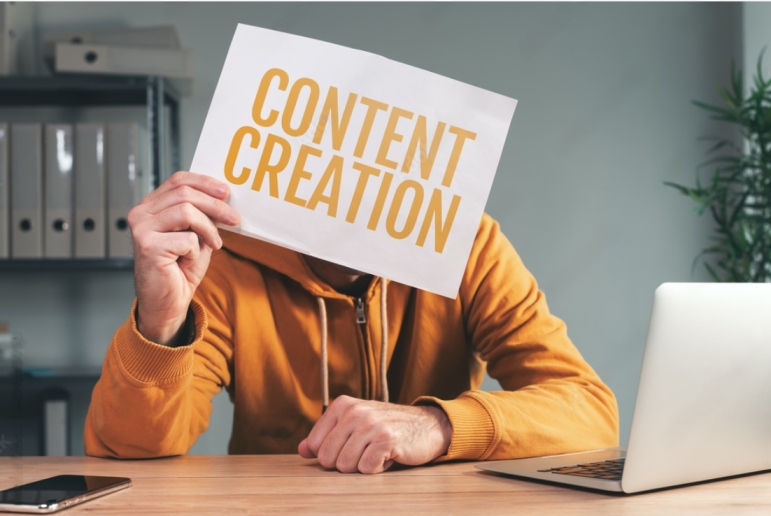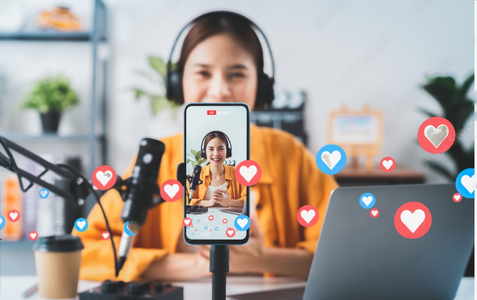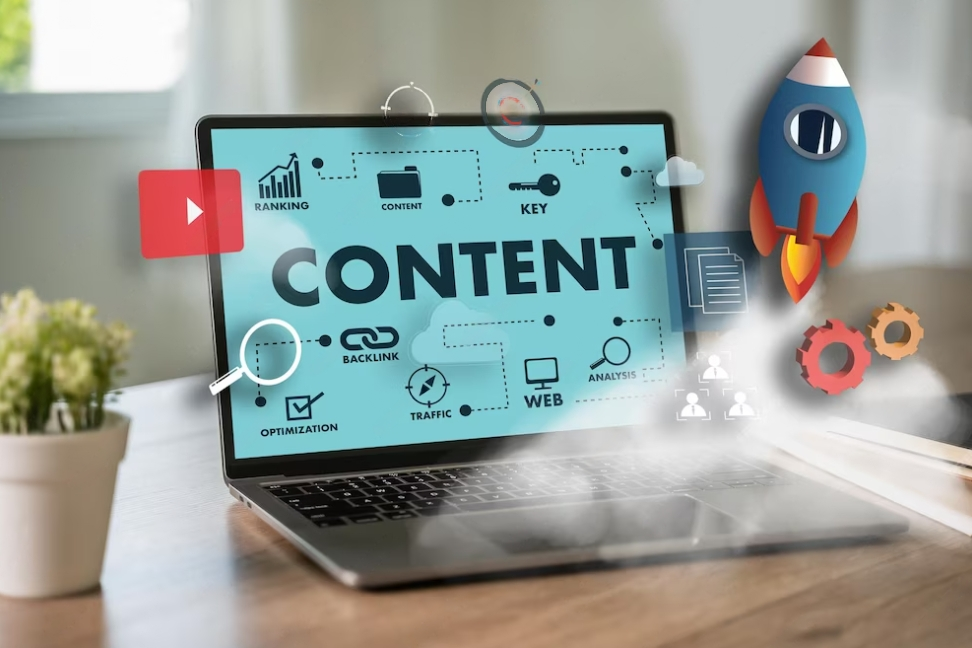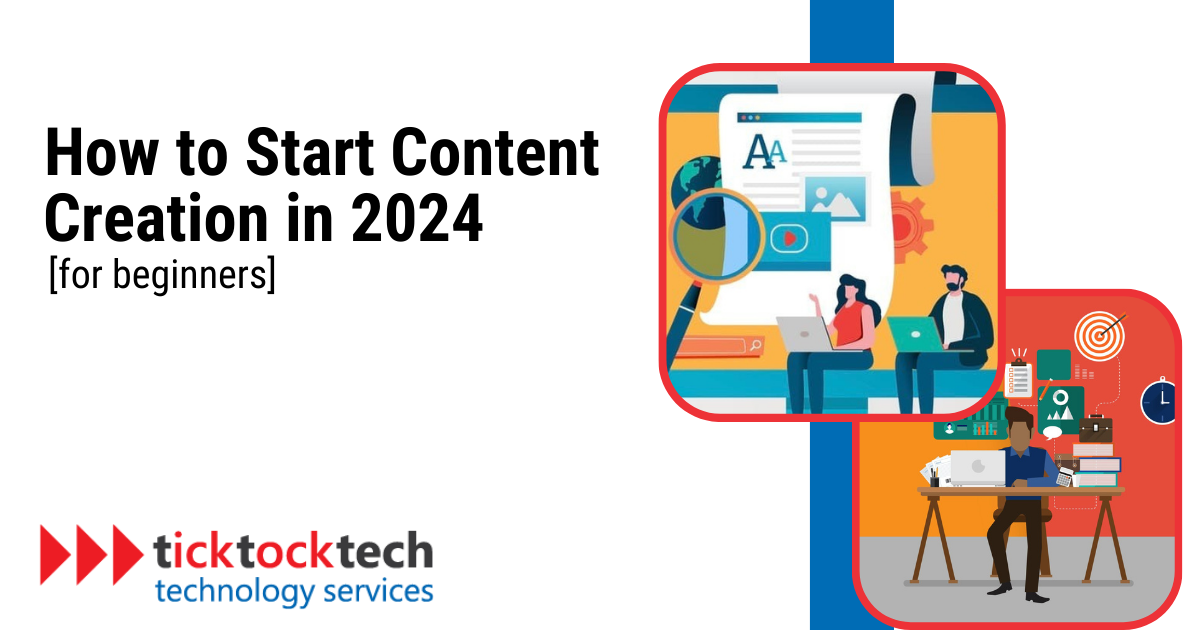Are you someone who loves to pour their heart and soul into writing or bringing stories to life through videography? Well, guess what? Content creation is your ultimate ticket to sharing your unique perspective with the world!
Get ready to dive in and unleash your creativity! Whether you’re searching for your perfect niche or crafting a killer content strategy, we’ve got you covered.
Let’s jump right in and explore the thrilling world of content creation together!
What is Content Creation?
Content creation means making different kinds of digital content, like blog posts, videos, podcasts, and written pieces, with the goal of entertaining and educating a readership.

Content creation includes making and sharing content to get attention from a specific audience. The goal is to offer something of value to your audience and entertain them in some way.
What Do Content Creators Do?
Content creators are the storytellers, the artists, and the innovators who bring digital creations to life. They research, write, design, record, and edit content to gain attention. Content creators provide value to gain attention in the digital world through:
- Educating and Informing: Content creators share their knowledge and expertise on specific topics to help others grow.
- Entertaining: From humorous videos to captivating stories, content creators use their creativity to entertain people.
- Inspiring: Through their personal experiences and insights, content creators motivate and inspire others to pursue their passions and goals.
- Building Communities: Content creators also bring people together by engaging with their audience, promoting conversations, and building relationships.
How Much Does it Cost to Start Content Creation?
The cost of starting content creation can vary widely depending on the medium you choose and the tools you need.
If you’re interested in creating written content, all you need is a reliable computer or laptop and a word-processing program like Microsoft Word or Google Docs, which are often free to use. Additionally, you may want to invest in a grammar and spelling checker, such as Grammarly, to ensure the quality of your writing.

Creating video content can be more expensive as it requires equipment like a camera or smartphone with good video quality, a tripod, and proper lighting. These initial costs can range from a few hundred to a few thousand dollars, depending on the quality you aim to achieve. Moreover, video editing applications may require a subscription or a one-time purchase.
A podcast requires a high-quality microphone, headphones, audio editing software like Audacity or Adobe Audition, and a hosting platform, which may charge a monthly fee.
Additionally, it’s essential to budget for unforeseen repairs and ongoing expenses, such as computer repairs, updates, and equipment maintenance.
Starting content creation doesn’t have to break the bank, but there are some costs to consider depending on your chosen format and level of professionalism.
Here’s a detailed breakdown of potential expenses:
Equipment
The type of equipment you need will depend on your chosen content format. Here are some common examples:
| Content Format | Essential Equipment | Average Cost |
|---|---|---|
| Blogging | Computer, internet connection | $500 – $1,500 |
| Vlogging | Camera (DSLR or mirrorless), tripod, microphone, lighting | $1,000 – $3,000 |
| Podcasting | Microphone, headphones, audio interface, recording software | $200 – $500 |
| Social Media Content Creation | Smartphone, camera, editing software | $200 – $500 |
| Graphic Design | Computer, design software (e.g., Adobe Photoshop, Illustrator) | $500 – $1,000 |
Software
In addition to equipment, you may also need specific software for editing, recording, or designing your content. Some popular options include:
| Content Format | Essential Equipment | Average Cost |
|---|---|---|
| Blogging | Computer, internet connection | $500 – $1,500 |
| Vlogging | Camera (DSLR or mirrorless), tripod, microphone, lighting | $1,000 – $3,000 |
| Podcasting | Microphone, headphones, audio interface, recording software | $200 – $500 |
| Social Media Content Creation | Smartphone, camera, editing software | $200 – $500 |
| Graphic Design | Computer, design software (e.g., Adobe Photoshop, Illustrator) | $500 – $1,000 |
Remember, these costs are just estimates, and you can always find budget-friendly alternatives or gradually invest in more advanced equipment as you progress in your content creation journey.
Additional Costs
In addition to the above, there are a few other costs you may also encounter:
- Marketing and promotion: To reach a wider audience, you may need to invest in marketing and promotion efforts, such as social media ads, email marketing, or influencer collaborations.
- Education and training: To improve your skills and stay up-to-date with the latest trends, you may want to invest in education and training, such as online courses, workshops, or conferences.
- Legal and financial considerations: Depending on your location and the nature of your content, you may need to consider legal and financial aspects, such as copyright, trademarks, and taxes.
What are the Different Types of Content Creation?

Content creation is a diverse and exciting field. It involves many different types of media and formats, each with its own audience. Let’s explore each type and see how they work.
1. Written Content
Written content has always been a significant part of human existence and continues to play a crucial role in the digital world. It serves as a powerful tool for informing, teaching, and entertaining people. From in-depth articles and blog posts to captivating social media captions, written content is instrumental in storytelling, establishing thought leadership, and building brands.
- Articles and Blog Posts: Articles and blog posts are flexible forms of written content that let you explore topics in-depth. You can use them to simplify complex subjects, give tutorials, share personal experiences, or offer expert advice.
- E-books and Guides: E-books and guides are a great way to provide valuable information in a well-organized format. They are often used for education, product tutorials, or self-help manuals.
2. Video Content
The saying “A picture is worth a thousand words” implies that a video is worth millions of words. Videos have revolutionized the way we consume content, making the information very easy to understand. From interesting documentaries to fun vlogs, videos can take viewers to different worlds and connect with them.
- Educational Tutorials and Product Reviews: Video tutorials give step-by-step instructions in an easy-to-understand way. On the other hand, product reviews give detailed evaluations of different products or services.
- Vlogs and Documentary-Style Content: Vlogs give people a look into the daily lives of content creators, making them feel closer to them. Documentary-style content looks at different informative topics using real-life stories and footage.
3. Podcast Content
Podcast is a popular type of audio-based content. From insightful interviews to captivating stories, podcasts cover different topics of interest.
- Interview Podcasts: Interview podcasts bring together experts and thought leaders to share their knowledge and perspectives on different topics. They offer a deep and informative listening experience.
- Storytelling Podcasts: Storytelling podcasts keep people entertained with fictional stories, real-life experiences, or personal stories.
4. Graphic Design and Visual Content
Graphic design and visual content give information and messages in a way that is both visually appealing and impactful.
- Infographics: Infographics use text, images, and charts to make complex information easy to understand.
- Illustrations: Illustrations are a creative and expressive way to share ideas and feelings. They can be used for storytelling, education, or branding.
- Memes and Social Media Graphics: Memes and social media graphics use humor and relatable images to get people’s attention in an engaging way.
Step-by-step Guide to Become a Successful Content Creator
Becoming a successful content creator involves creativity and strategic planning. Here’s a step-by-step guide to becoming a successful content creator:
Step 1: Determine your Personality
Identify the type of content creator you want to be, whether it’s a creator educator or a creator entertainer. This decision will shape your audience, content, and the platform you choose.
Step 2: Identify your Audience
Establish a clear understanding of your target audience. This will help you tailor your content to their interests and needs.
Step 3: Establish your Style
Develop a unique style or brand that sets you apart from others. This will help you build a recognizable brand and attract a loyal audience.
Step 4: Practice Consistently
Consistency is key to improving your skills and building an audience. Dedicate time to practice and create content regularly to refine your craft.
Step 5: Analyze and learn from your content
Regularly analyze the performance of your content and gather feedback from your audience. This will help you understand what works well and make improvements accordingly.
Step 6: Collaborate and network
Collaborate with other content creators and engage with your audience to expand your reach and build connections within the industry.
Step 7: Monetize your content
Explore different monetization strategies such as brand sponsorships, affiliate marketing, or selling your own products/services. Find opportunities to generate revenue from your content.
Frequently Asked Questions on How to Start Content Creation
To start content creation as a beginner:
– Find your niche: Identify a topic that aligns with your passions, expertise, and target audience.
– Choose your platform(s): Select the platforms that best suit your content format and audience.
– Create a content calendar: Plan your content in advance to maintain consistency and engagement.
– Produce high-quality content: Focus on creating original and visually appealing content.
– Promote your work: Utilize social media and SEO strategies to reach a wider audience.
– Analyze and adapt: Track your performance metrics and adapt your content strategy accordingly.
To become a content creator, start by identifying your passion and niche, researching and learning about content creation, and choosing the medium that aligns with your skills and interests.
There are many different ways to create content, so you should find a format that you enjoy and that you are good at.
Conclusion: How to Start Content Creation as a Beginner
Content creation is an exciting and rewarding path for self-expression and connection. By following the step-by-step guide outlined in this article, you’ll be well on your way to becoming a successful content creator. Remember to stay consistent, engage with your audience, and continuously learn and improve your skills. Good luck on your journey! We at TickTockTech extend our best wishes for your success.

